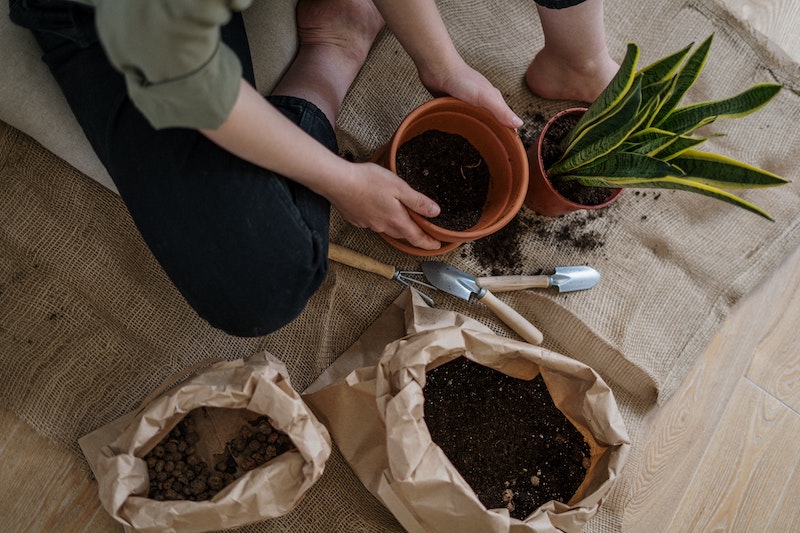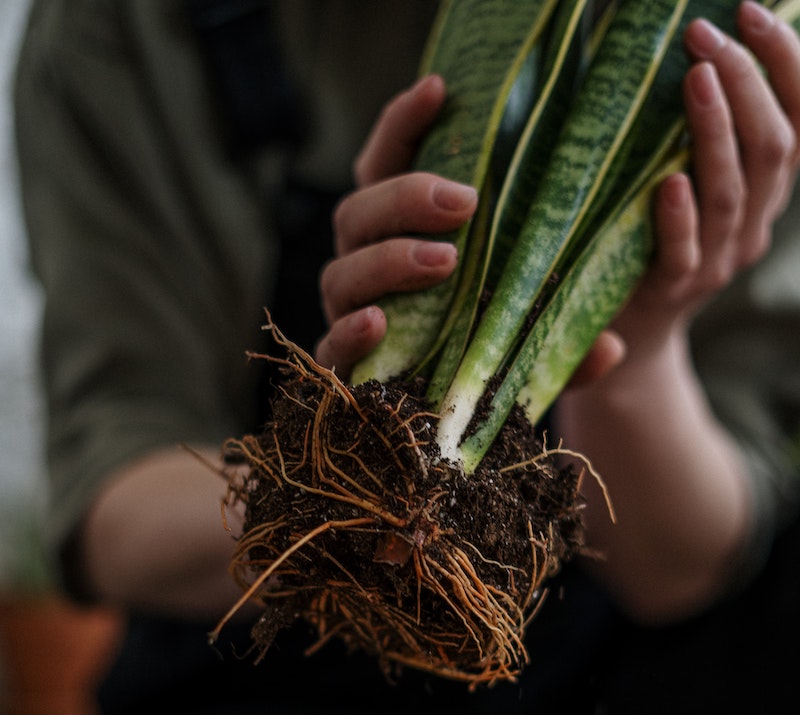Snake plants are known as one of the easiest houseplants to grow due to their tolerance of various light conditions as well as their extreme drought tolerance. They are also not fussy when it comes to their container. While they are easygoing plants, there does come a time when a snake plant benefits from repotting. Repot your snake plant if it outgrows its home, if it needs a more suitable container, or simply if you are looking to change the look of your pot.

Potting Snake Plants
There are many different varieties of snake plants to choose from at your local nursery. Keep in mind the space and light conditions in your home, and choose a snake plant that will fit your circumstances. Choose a container that is slightly larger than the nursery pot with at least one good drainage hole. Your pot can be made of any material from terra cotta, to glazed ceramic, or plastic. Terra cotta is always a great choice because the porous material absorbs excess moisture from the soil. Once you have chosen the plant, its growing location, and new container, you are ready to begin repotting your new snake plant.
When you are ready to repot your snake plant, make sure you have all of your materials ready including your new pot, cactus potting mix, garden gloves, and a trowel if needed. To control the mess, place newspaper down or use a large cardboard box if repotting indoors. Carefully remove your Snake Plant from its old container by tipping it on its side and gently squeezing or tapping the pot until the plant loosens and comes out of the pot. Examine the root ball and remove any dead or rotten roots and gently loosen the root ball. Add a few inches of cactus soil mix to the bottom of the new pot and place your Snake Plant inside. Fill the pot with the cactus soil mix and press the plant down firmly to secure it in its new home. Water thoroughly after potting.

Repotting Snake Plants
There are several reasons why you would want to repot your snake plant. The most common is that the plant has outgrown its container. You can tell your plant has outgrown its pot if the pot is bulging or cracking, if you can see roots coming out of the bottom, or if the plant’s growth has slowed and its foliage is wilting or browning. Another reason to repot an unhappy snake plant is lack of drainage in its current home. On average, snake plants benefit from being repotted every three to four years since they are slower growers.
Best Soil For Snake Plants
Snake plants are native to dry habitats in West Africa and therefore require well-draining soil. Cactus or succulent soil mixes are a good choice for snake plants because they contain sand, perlite, and peat moss or coconut coir, which do not retain excess moisture. General potting mixes alone are not a good choice for Snake Plants because they retain too much moisture and can promote root rot. You can make your own soil mix for your snake plant by mixing three parts potting soil, three parts sand, and two parts perlite.
Snake Plant Drainage
Snake plants are drought tolerant plants that do not like having overly wet feet, so proper drainage is important when planting a snake plant. Choose a container with drainage holes or use a drill to create the holes. Saucers will often come with a pot that has drainage or can be purchased separately. They will catch any drips and overflows from the drainage hole along with any soil that escapes the pot.
If you have a container without a drainage hole and you are unable to create a drainage hole, you can keep your snake plant in its nursery pot placed inside the container without holes. When it comes time to water your snake plant, remove the nursery pot from the container and water in a sink or over a saucer to catch any runoff. Do not let the plant sit in standing water inside the pot.
 |
Author Katie Endicott - Published 5-22-2023 |
